The Indian Railways has many narrow gauge lines which were built during the British Rule, the relics of the Raj. Some of the more well known ones are the Kalka Simla Railway and the Darjeeling Himalayan Railways. A lesser known narrow gauge line is the one which runs from Gwalior to Sheopur kalan in the state of Madhya pradesh in central India ….
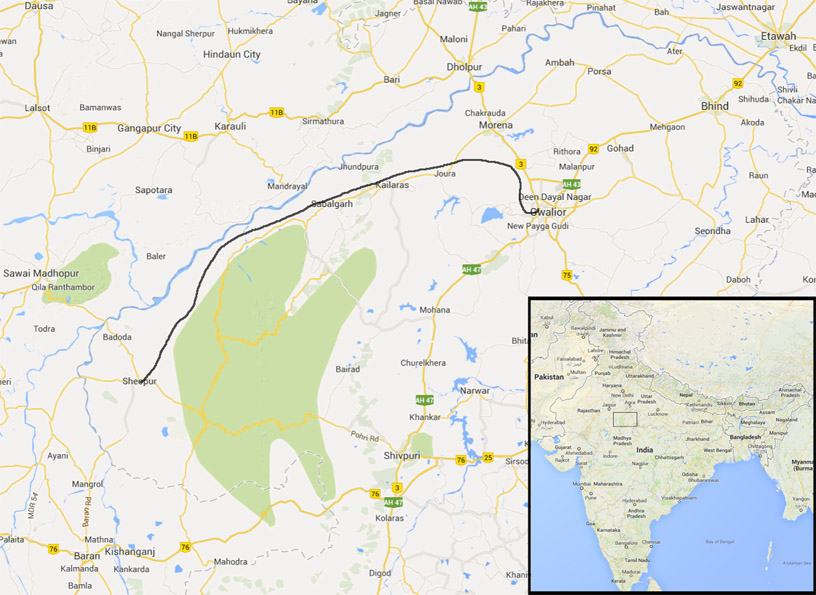 click on pic
click on pic
I had visited the line way back in 2003, but in 2009 so had another friend of mine – Mohan Bhuyan. The following is an article written by Mohan about his trip on this line. It went on to win the best article for the year 2009 on IRFCA (Indian Railways Fan club association). ……over to Mohan.
In the last week of March 2009 Bharath Moro, Shashanka Nanda and I took a ride to Sheopur Kalan (SOE), on the last surviving 2 foot (600mm schmalspur) line of the erstwhile Scindia State Railway (originally Gwalior Light Railway). If you are jaded with life, take the train to Sheopur and connect with a India that is very different to the one you are used to. Some observations and highlights from the trip….
The best thing about Gwalior Jn is that almost all goods trains just speed through while just about all the express trains have to stop here. Plenty of container action on view as well as some BCNA (box cars) & BTPN (tank cars) sets, and the odd diesel hauled freighter taking the Shivpuri line.
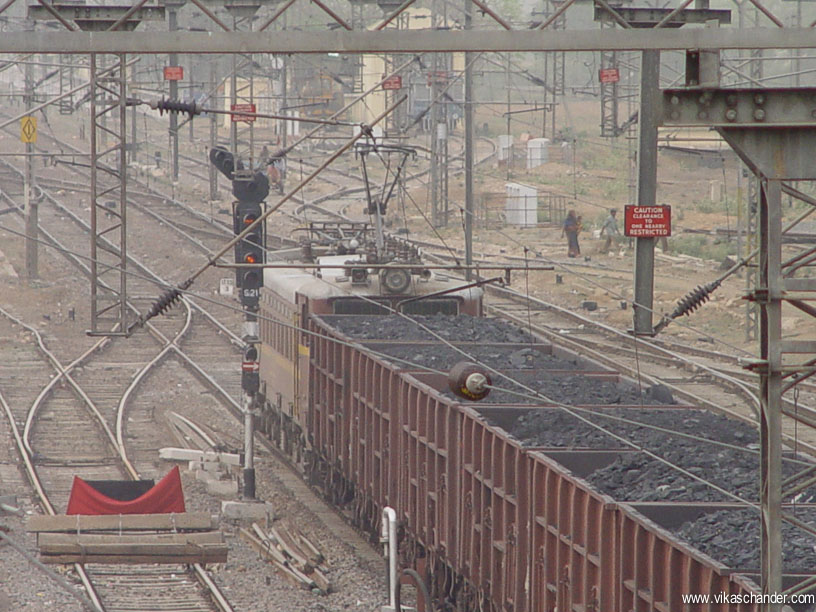
Even if you are a very wealthy railfan, eschew the opulent Usha Kiran Palace Hotel and just head for the Jhansi end of Platform 4, from where the unpretentious & friendly Mahima Hotel is visible. Ask for a room on the 2nd floor (which has a large station facing terrace), pour yourself a drink, have your dinner sent up, put your feet up on the parapet and watch the goods trains clatter through while the expresses glide stealthily to a halt.
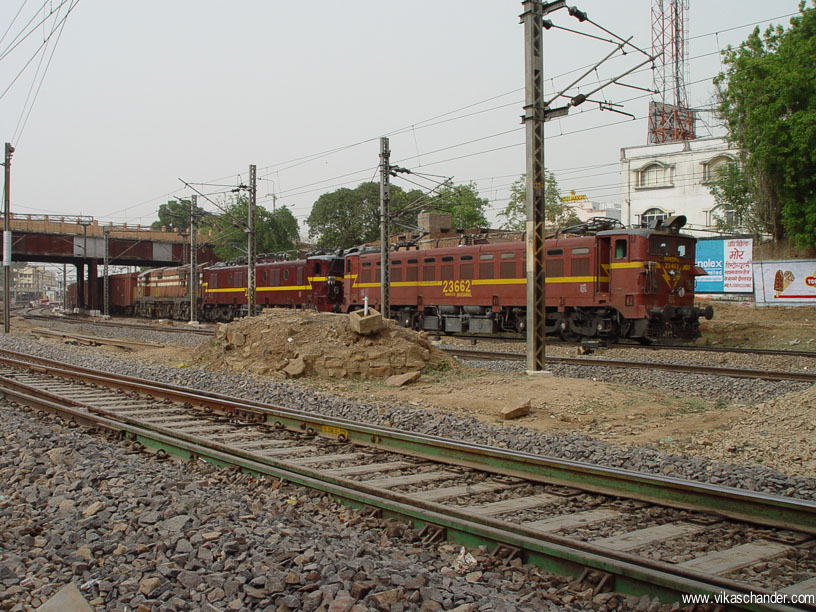
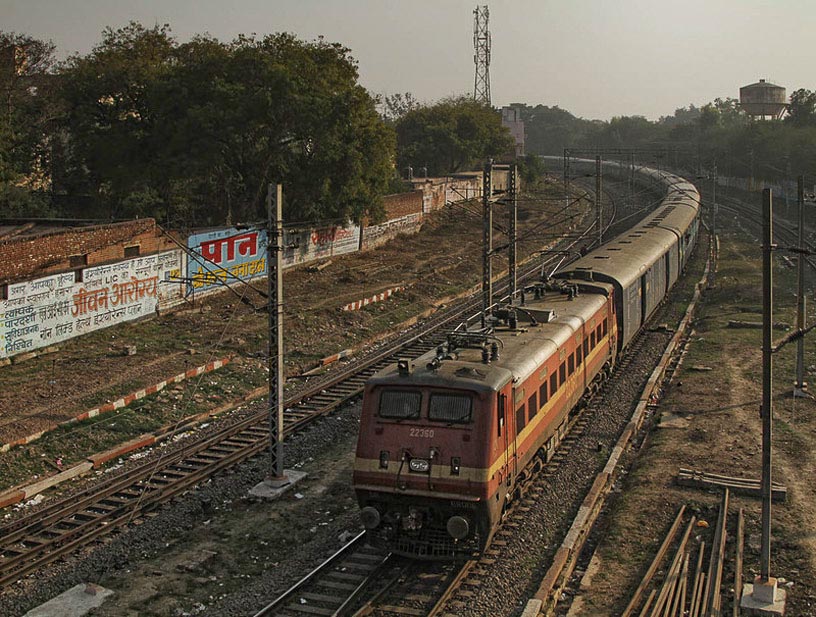
The only through train to Sheopur Kalan, the seven carriage & class NDM5 locomotive, No.271 Passenger leaves on the dot at 0625 but don’t expect to find a vacant seat unless you reach the station at 0530 or earlier. The best thing to do is to arrive with 5 minutes to spare and commandeer a door till a seat in Upper Class becomes available.
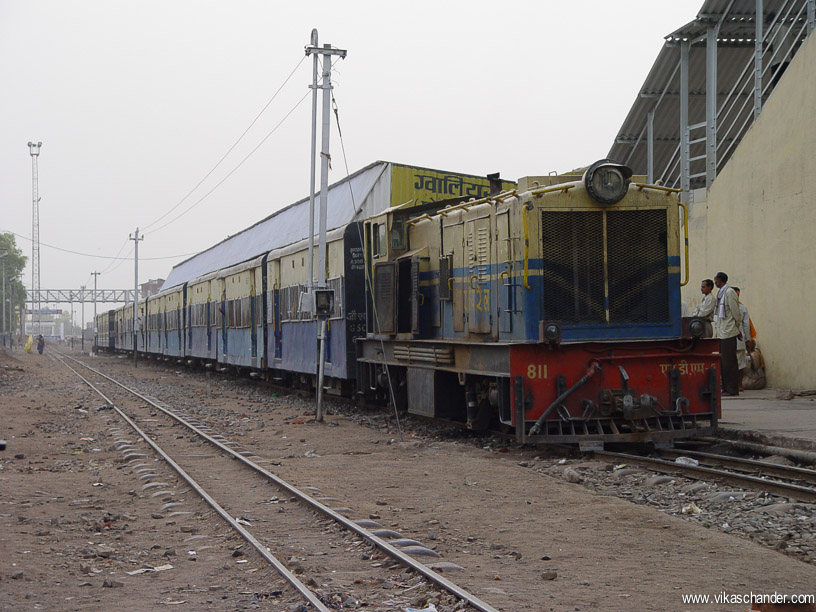
The line veers away from the station and the tiny Narrow gauge carriage workshop almost immediately…..
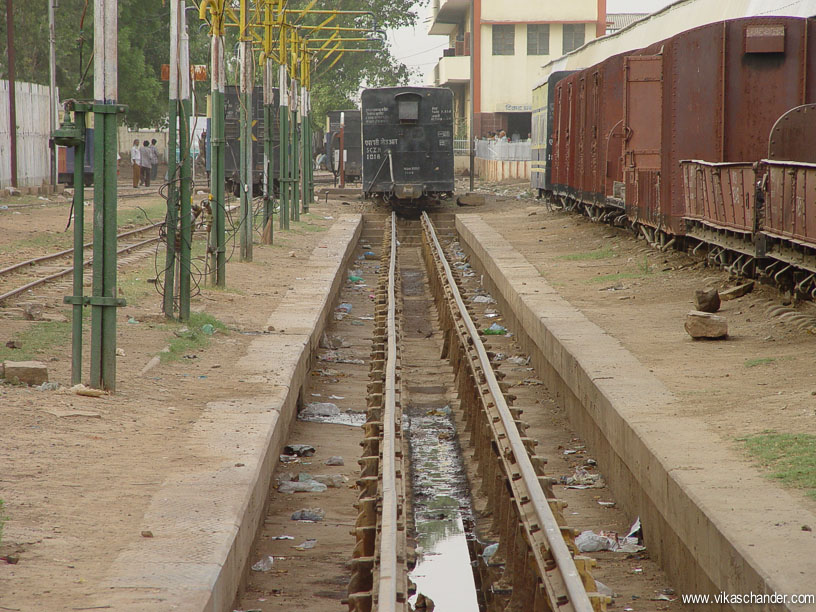
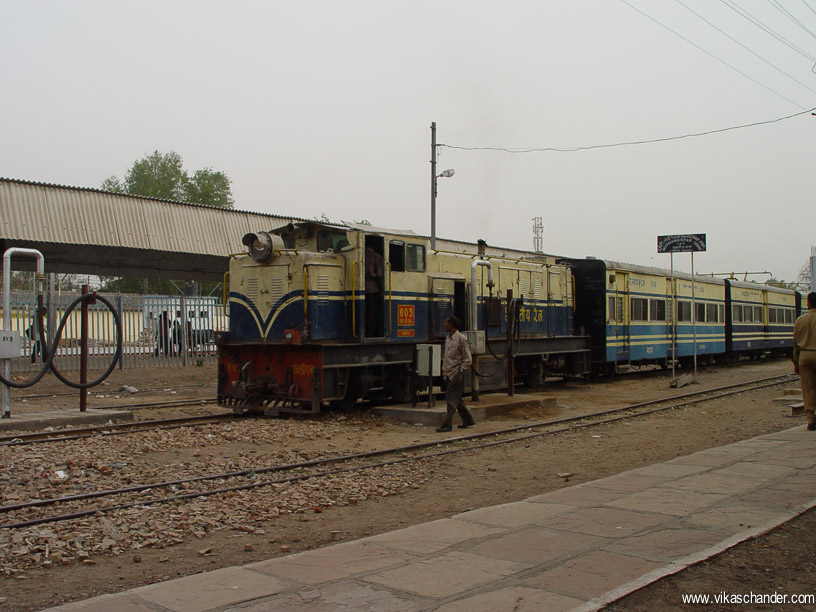
EDIT!!! – vikas – while i was there i had the chance to look at the loco maintenance facility ……
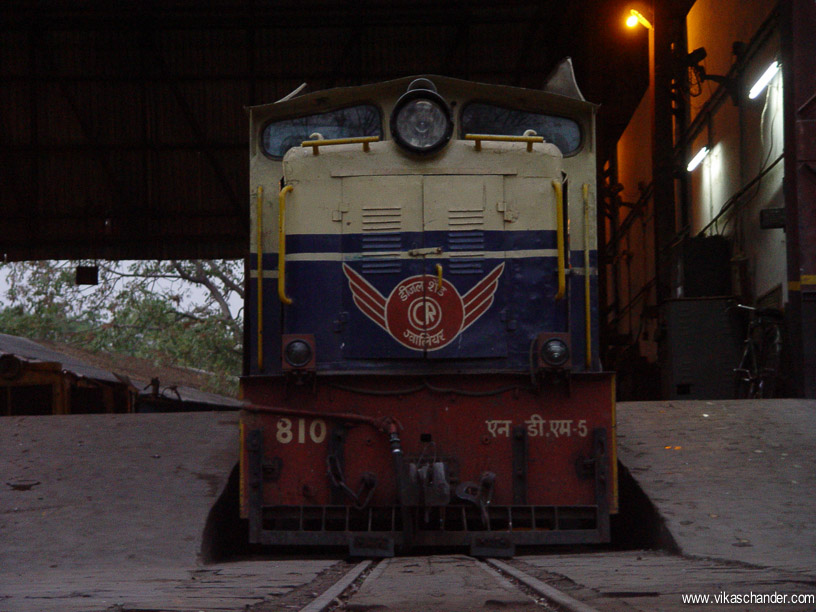
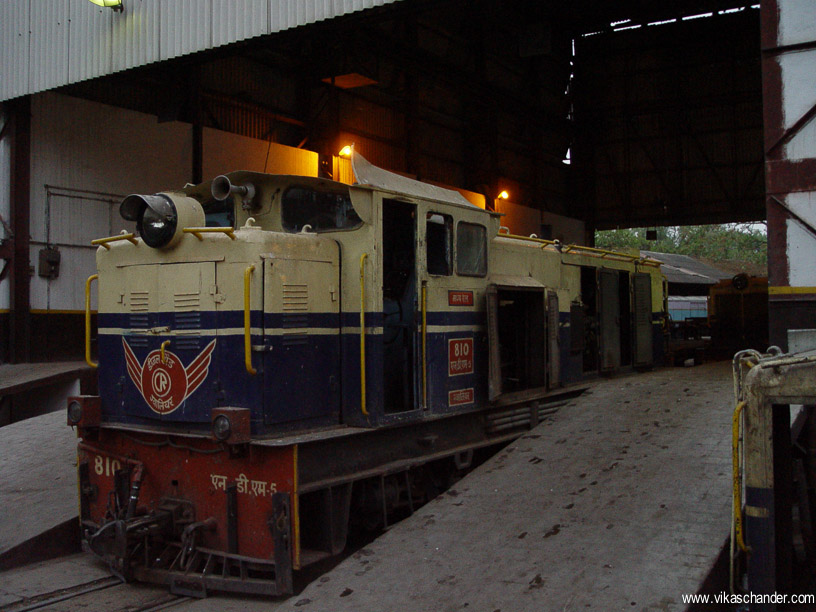
it had it’s own temple …..
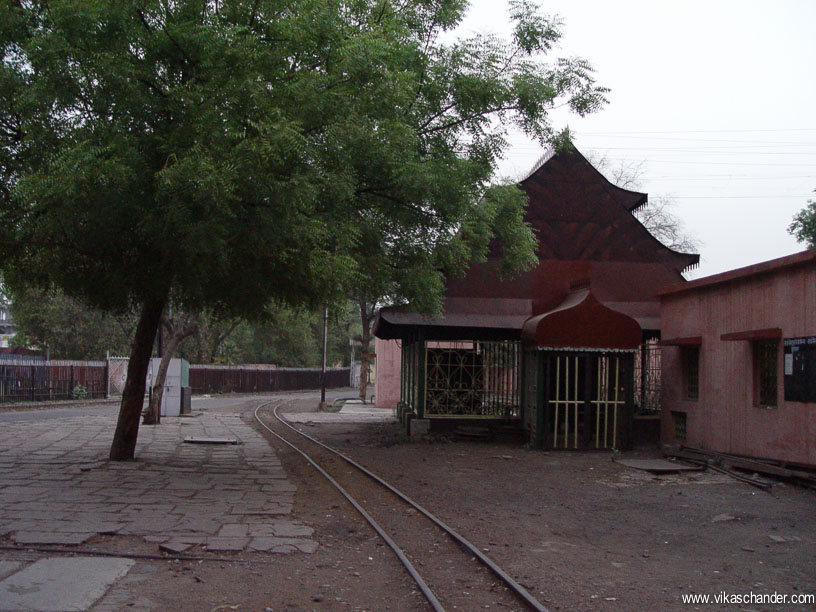
and a water tank tower …..
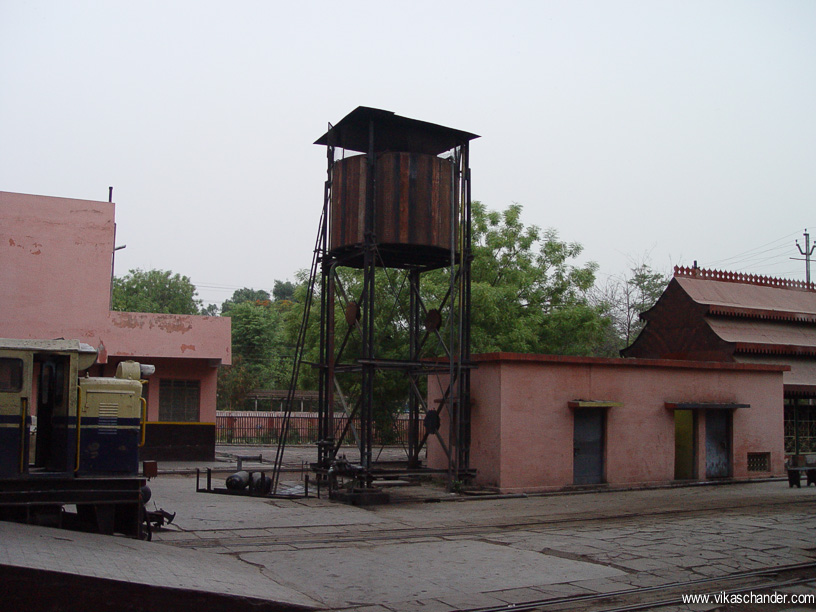
….and a small yard where they kept old stock as well as a rail bus of sorts ….
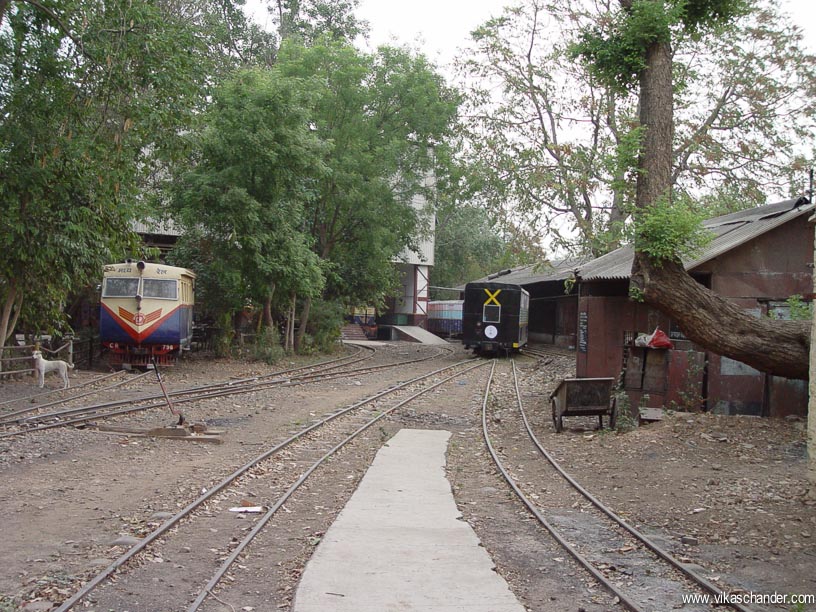
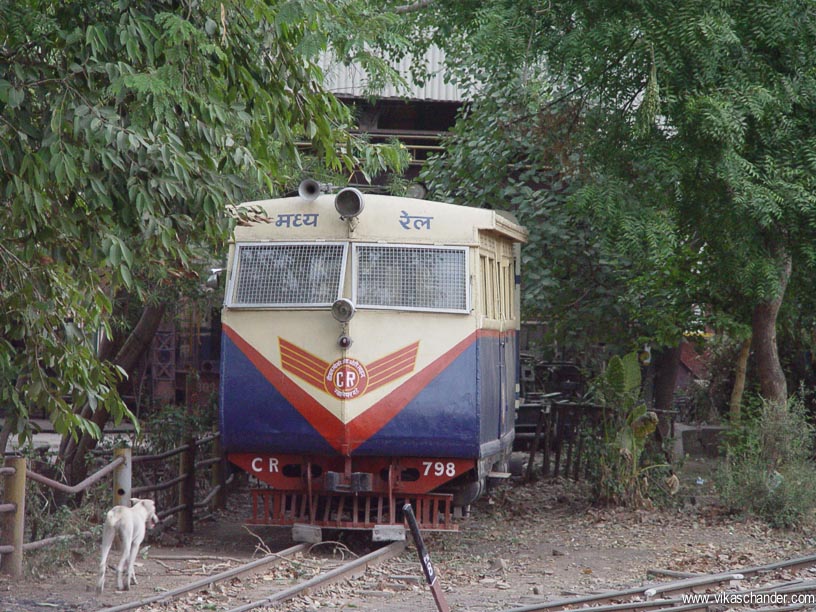
….. back to Mohan ….EDIT.
and plunges straight into the city, running within touching distance of the houses….
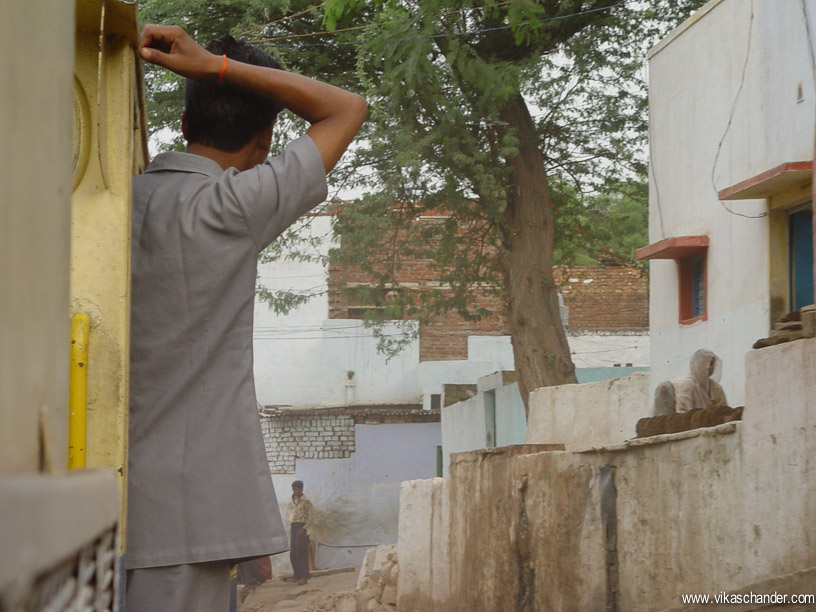
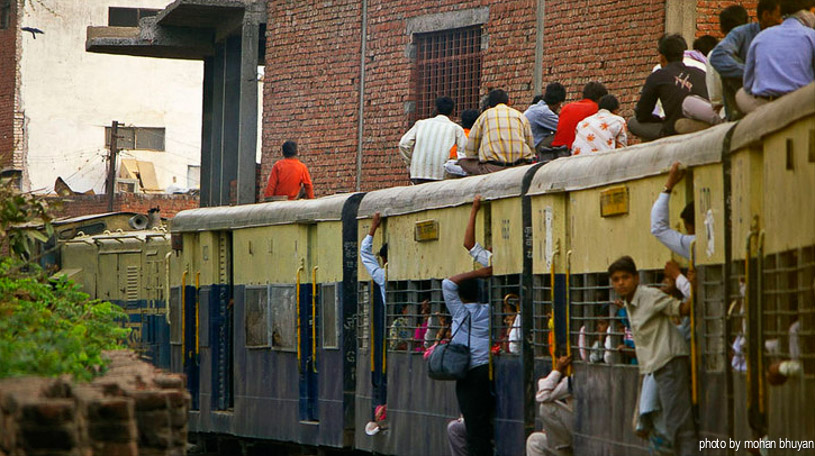
It skirts the southern end of the imposing Gwalior Fort…..
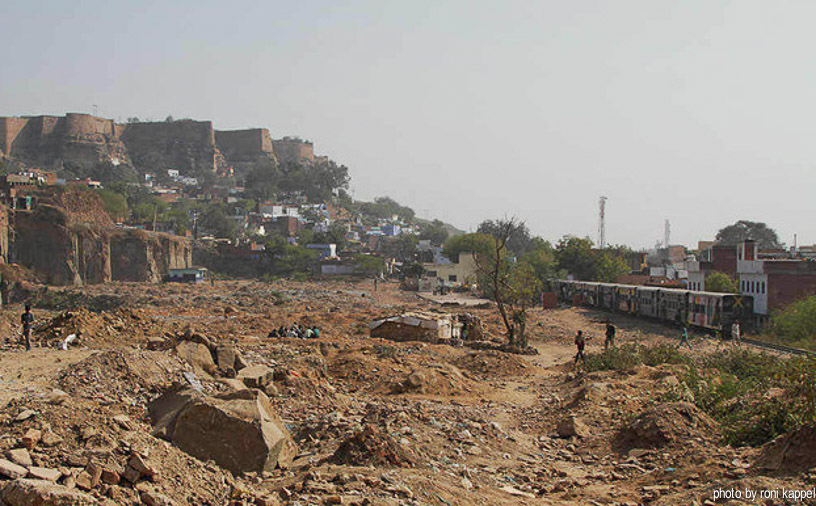
and then heads almost due north for the next 30 km or so, next to or parallel to the Bombay-Agra NH 3 before turning westwards for Sheopur Kalan…
A manned level crossing in the city has got to be the longest one in the country. Railway and road make simultaneous use of a long and high cutting with the track in the middle of the road. Road traffic is held up by gates at both ends of the cutting so in effect the entire cutting is the LC!
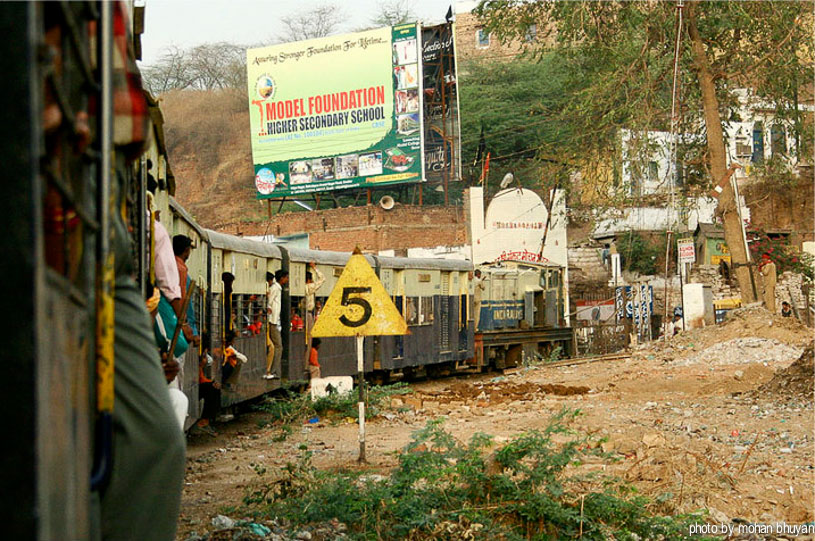
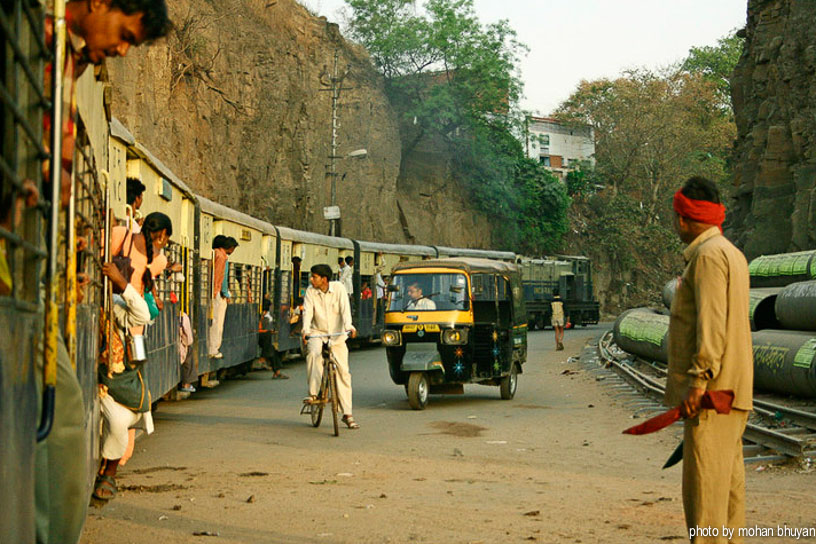
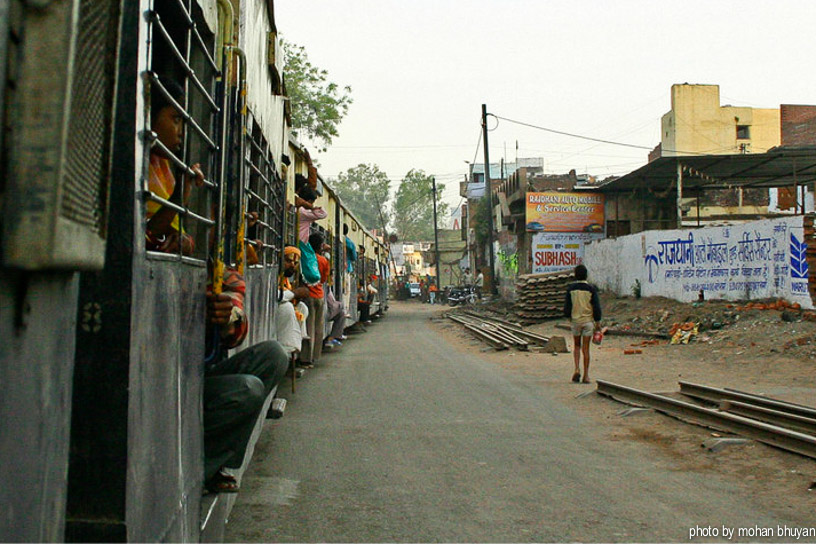
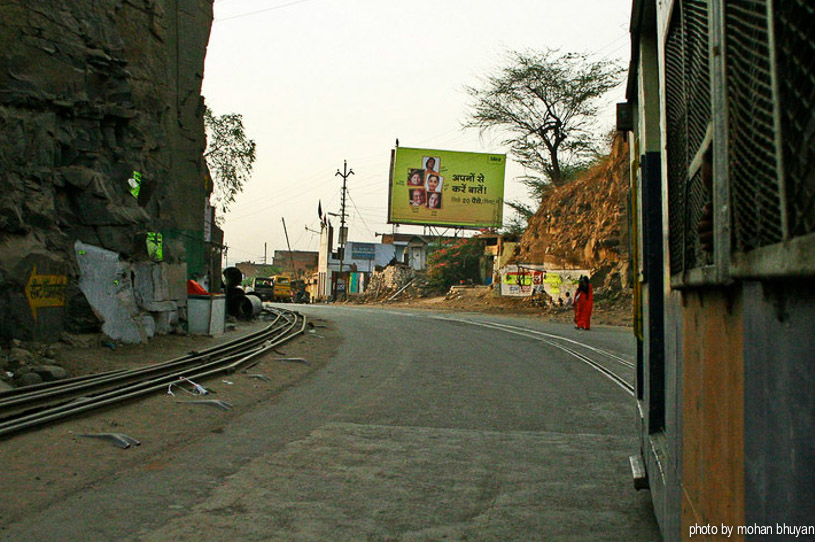
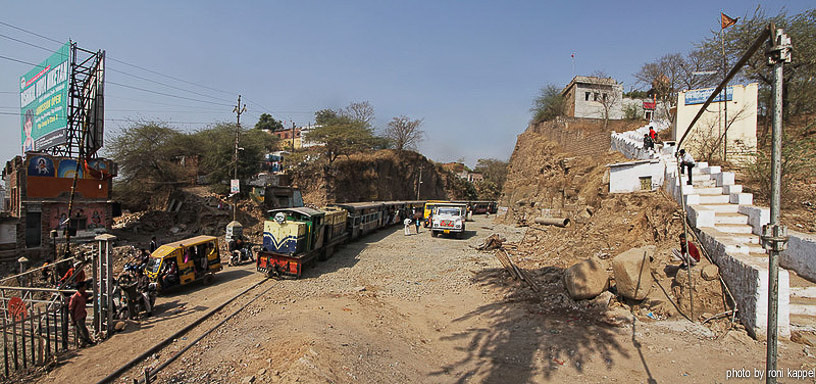
Ghosipura is the first halt, abreast of the South west corner of Gwalior Fort. It was once the junction for the Shivpuri branch. Today a road has replaced the permanent way and the Broad gauge branch line parts from the mainline a couple of km south of Gwalior. Ghosipura is also where the train gets really crowded and most of the men folk opt to sit in Upper Class – the carriage rooftops. Why at Ghosipura? Why not from Gwalior? You may ask. Well, there is enough standing room till Ghosipura for one, but more importantly the section through the city is crisscrossed by numerous low hanging cables!
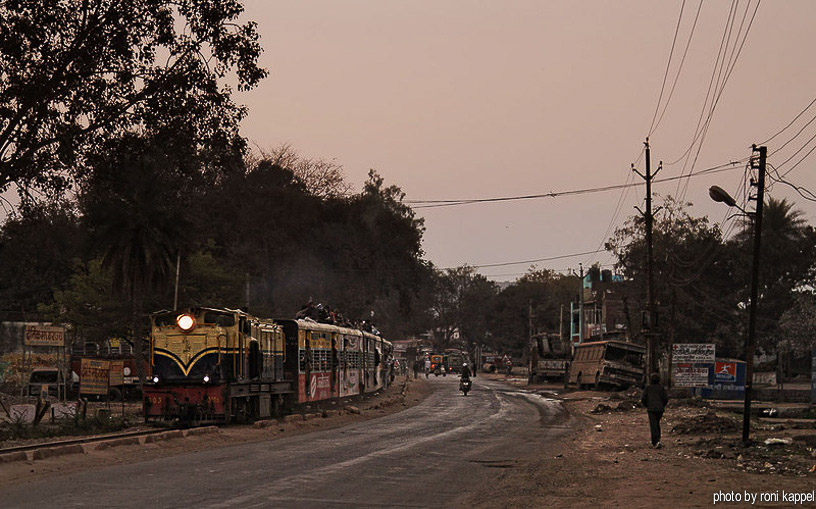
I shift to Upper Class at Ghosipura while Shanx and Moro follow suit at the next station Motijheel. The rooftops quickly fill up and soon the top surface of each carriage and the loco is scarcely visible from our perch on the last vehicle. So when the train is moving it looks like we were all sitting on a long flying carpet.
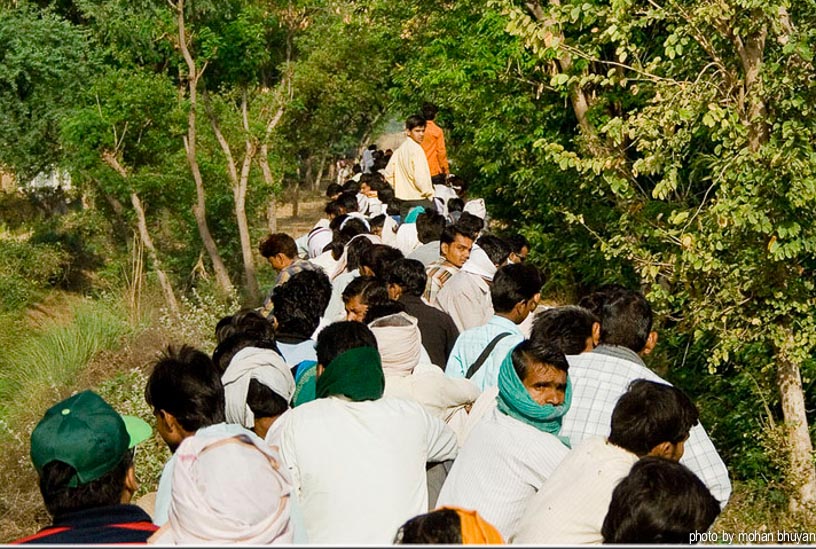
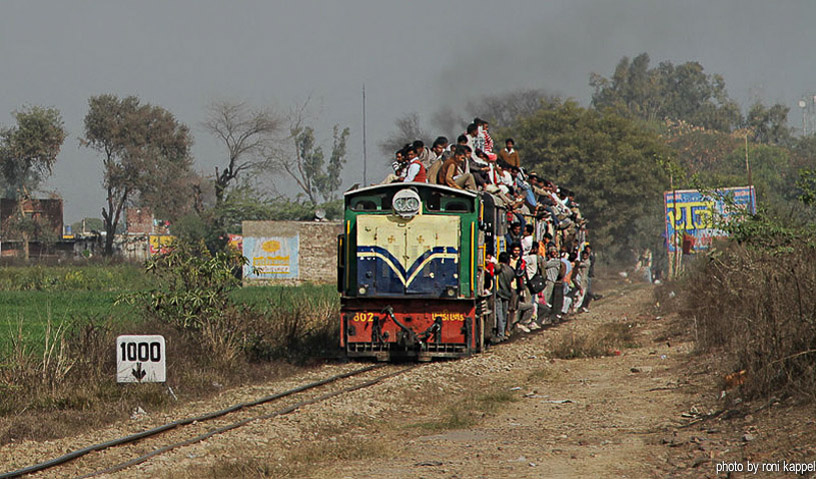
Though Upper Class is unprotected from the elements it’s not without some amenities. Young boys selling peanuts, garam chana masala (spicy roasted chick peas) and water pouches leap nimbly from carriage to carriage. Regular passengers engage in card games just as they do in countless commuter trains throughout the country. And if the gently rocking motion has a soporific effect, it’s possible to stretch out with your bag or headgear as a pillow, and take a nap!
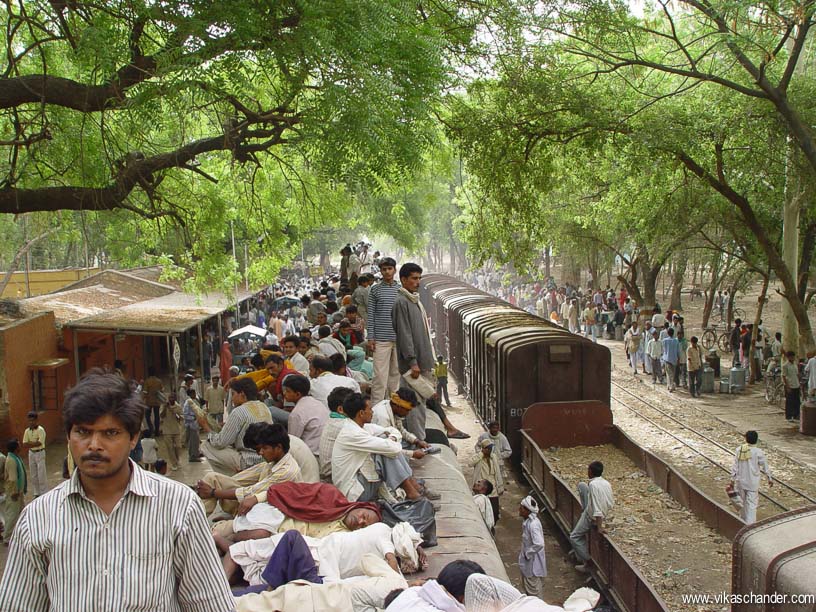
While Sheopur is West by Southwest of Gwalior, the line heads out of the city in a Northwesterly direction, as if it has no intention whatsoever of going to Sheopur. For a while it runs on the verge of NH 3 and don’t be disappointed if even mopeds & overloaded tractor-trailers effortlessly overtake the train……
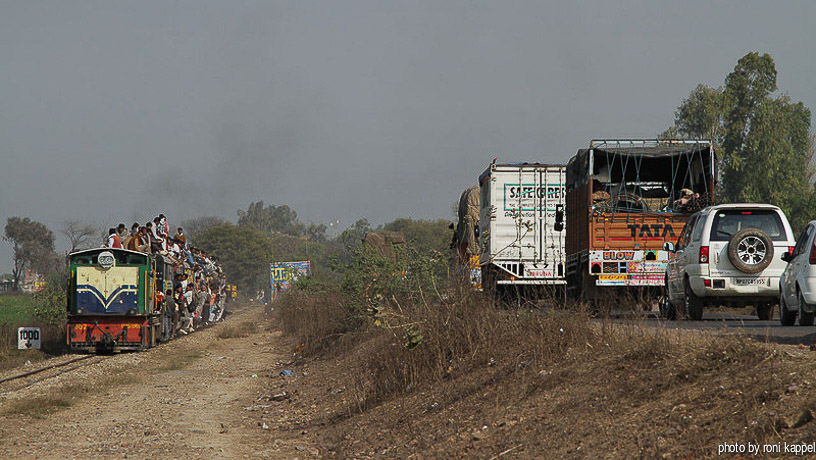
because the latter has the last laugh; all road vehicles are held up at a LC near Motijheel.
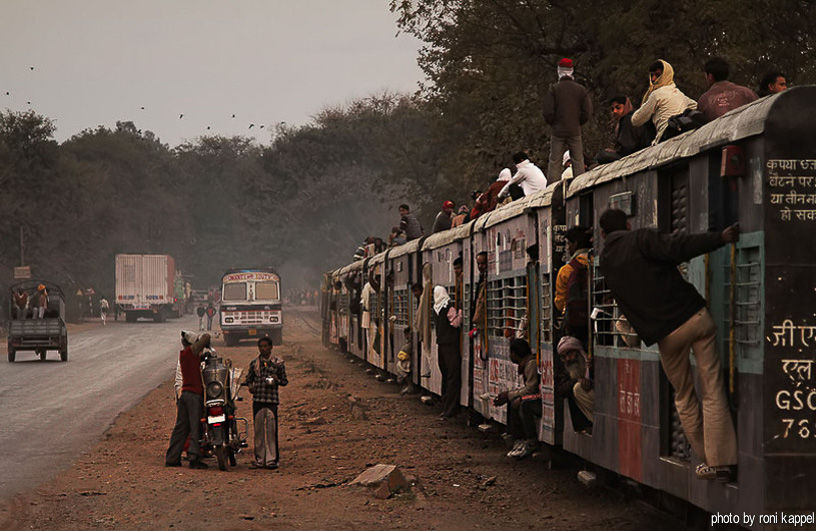
Besides, the slow gait allows one to sit atop the carriage without clutching onto anything (though I take care to do so throughout the trip as my legs are dangling in the space between two carriages).
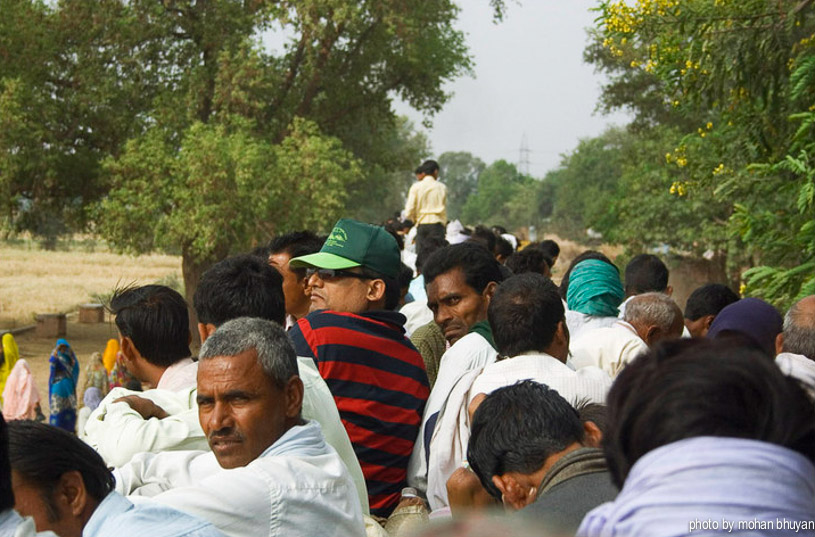
At Motijheel there is a small power plant, which must have supplied all of Gwalior’s requirements in a bygone era, but is probably not worth the bother now. Ian Manning mentions (in his invaluable accounts of train travel in 1960’s India) that coal was once brought here by a local shunt. No evidence of that today.After Motijheel the BG mainline to Agra hovers into view to the east and both gauges run parallel to each other (at places less than a kilometer apart) till the industrial area of Bamoura (Banmor), where thankfully all the factories are towards the highway and the BG side. A WAP 4 loco led express (the Sachkand from Nanded according to Shanx) overtakes us on the way and the difference in power and speed is striking. When the inevitable gauge conversion takes place, I suppose it would make economic and practical sense for the junction to be at Banmor and for the city line to be abandoned.
After Motijheel the train labours over a barren and stony ridge and for a while there are no signs of habitation – no houses, crops or roads.
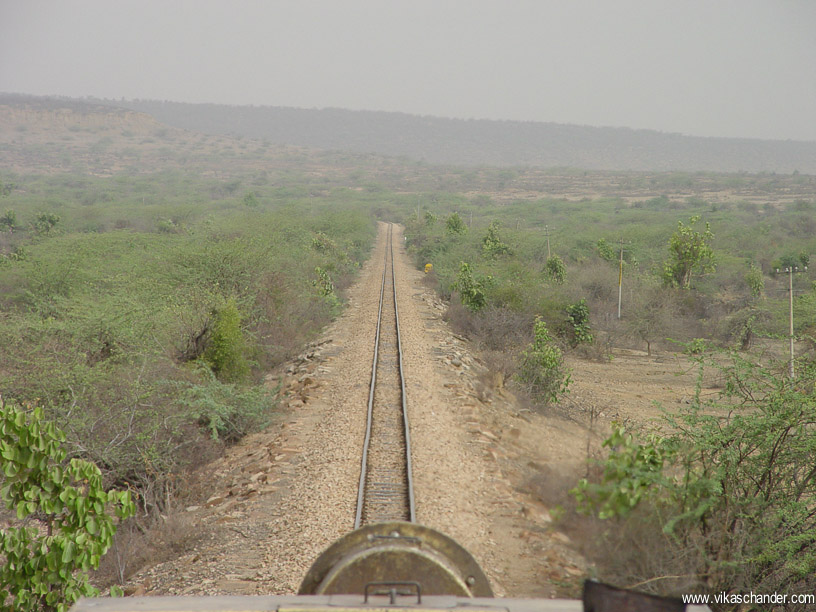
At one point the track dips suddenly and we cross a small river called Sank on a causeway then climb again on a 1:100 slope. Only on Narrow Gauge….!
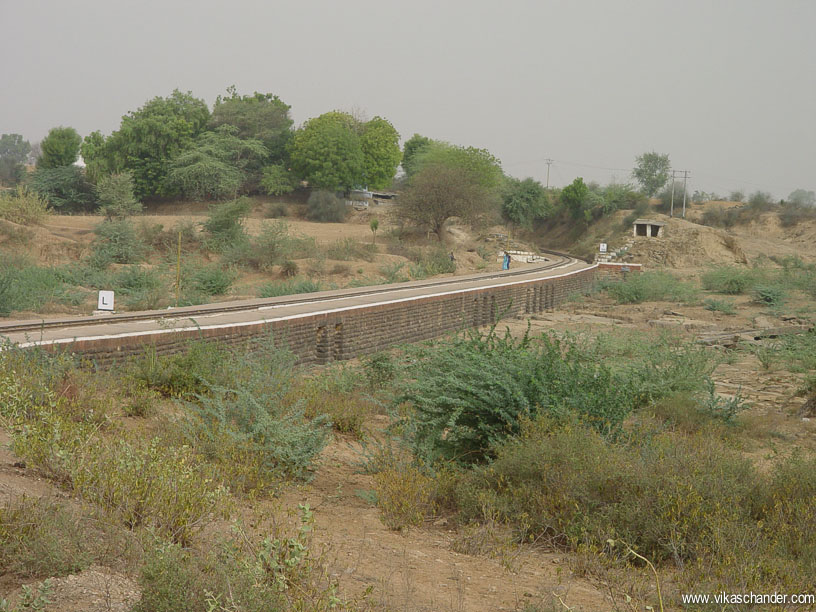
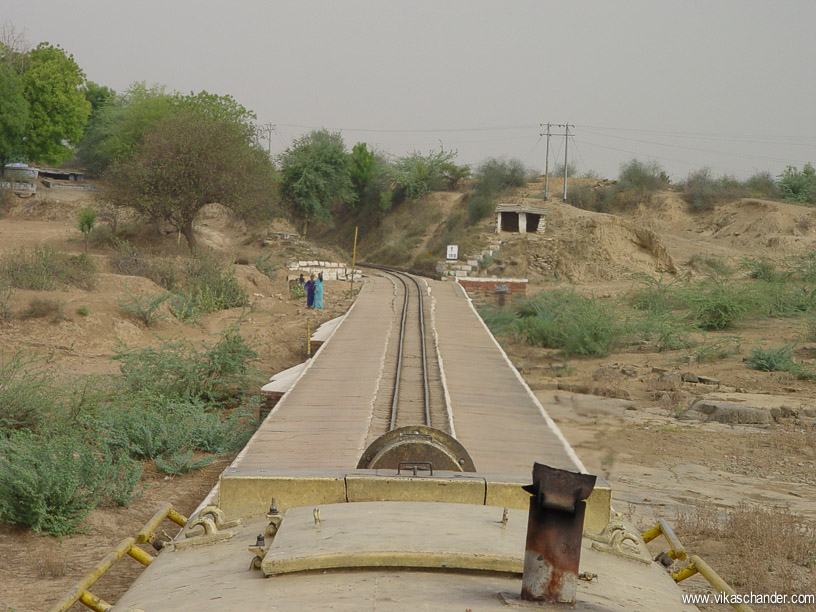
Sumaoli is a biggish station (in the sense it has two loop lines and a couple of sidings) and is the site for the first crossing of the day with 274 Sabalgarh -Gwalior Passenger.
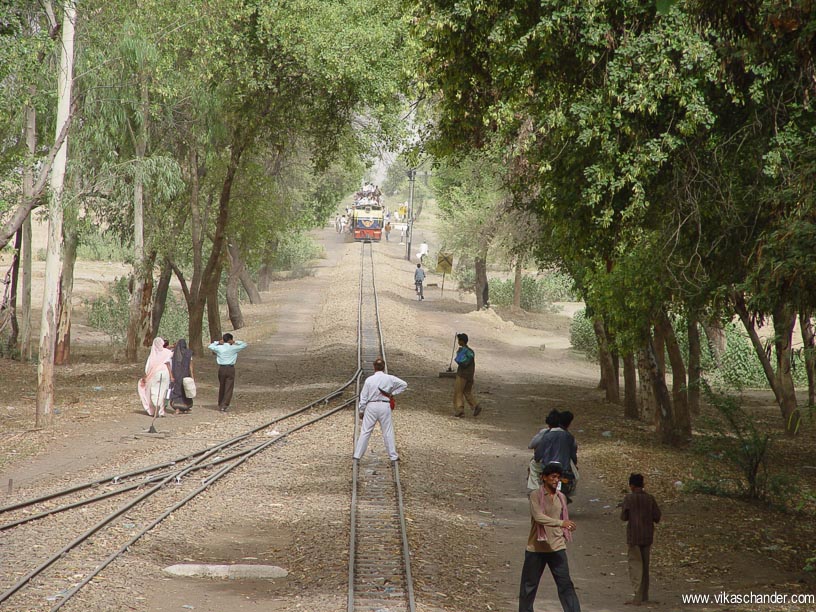
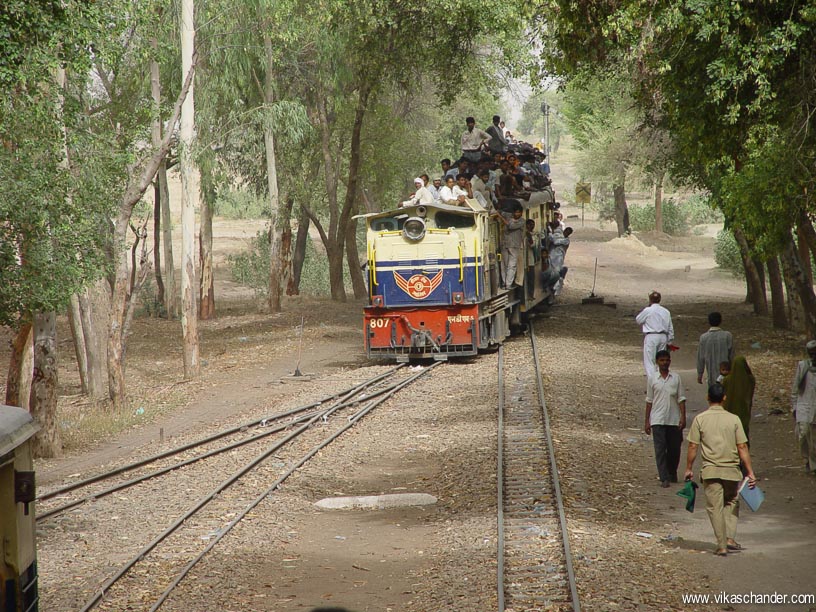
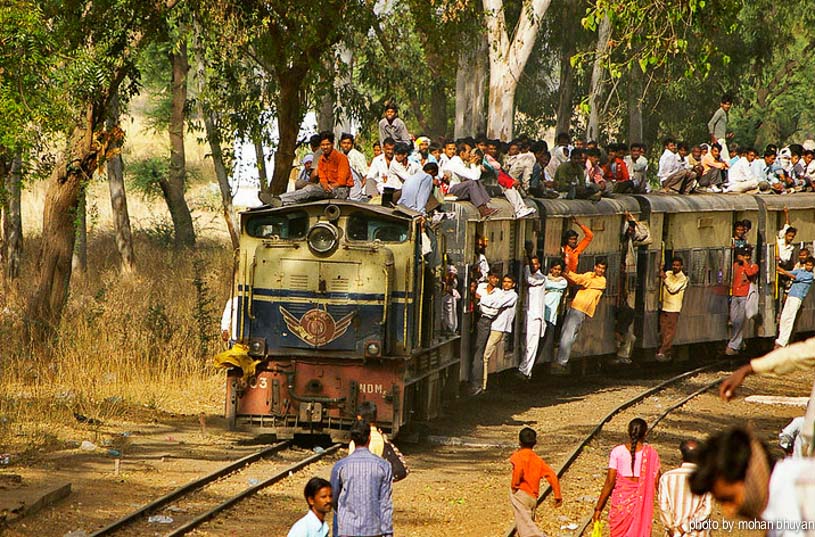
A few 1987 built boxcars are parked on one of the sidings. Back In 2004 Vikas Singh noted goods wagons at this place that hadn’t been moved for 3 years. Presumably, it’s the same rake! Two rudimentary windows have been punched out of the sides of the boxcars, a couple of steel benches can be seen inside and the legend “Fit for Passenger” is painted on the sides (wonder which saloon riding genius came up with that idea). Thankfully it was short lived, for the box cars are half filled with boulders and probably see service as a departmental rake, if at all
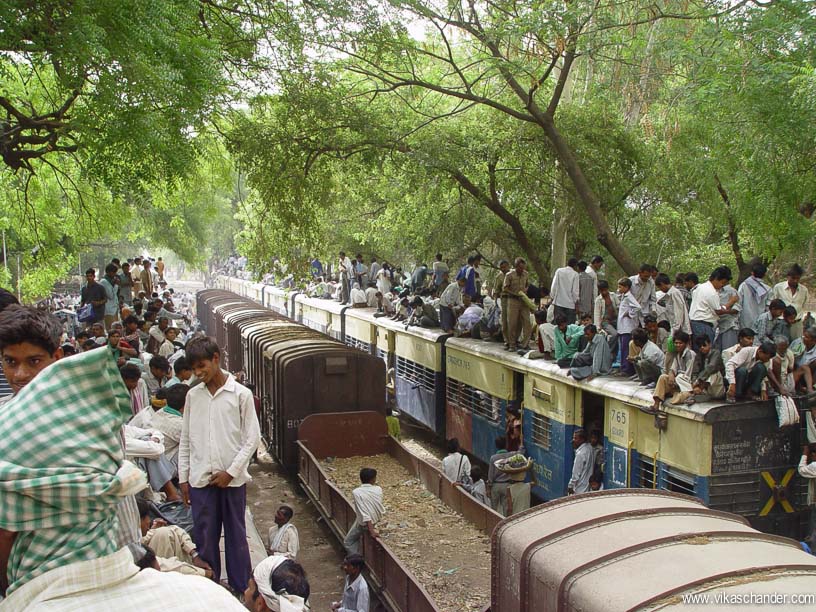
Upper Class on 274 is jam packed, so much so the loco also has a full complement of passengers on top as well as clinging to the sides. In fact all the other trains we cross today seem to be far more crowded than ours. The Railway’s disclaimer is a warning stenciled at the ends of the coaches – rooftop travel attracts a fine of Rs.500 or 3 months imprisonment. It also has warning signs at stations preceding the two through truss bridges on the route. But these warnings are impossible to heed – the 7 coach trains have a capacity of 150-200 passengers but easily carry twice that number.
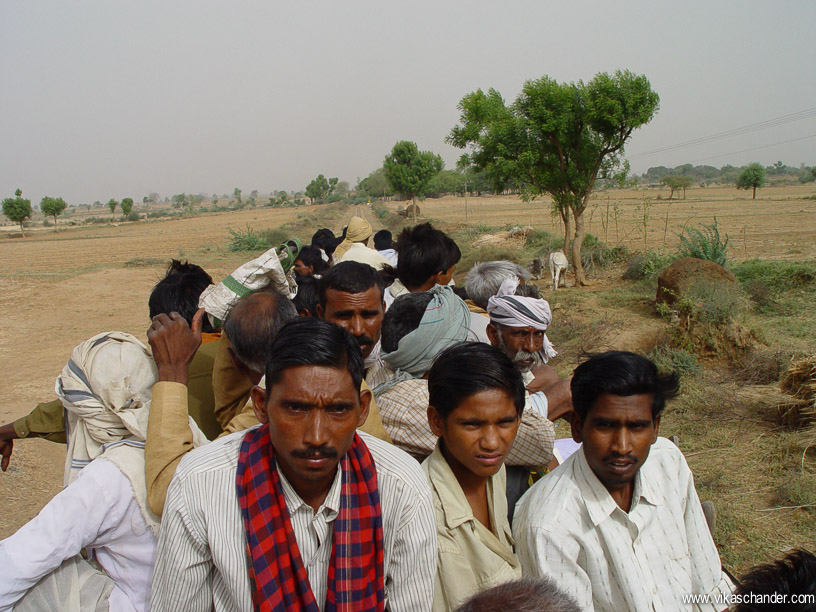
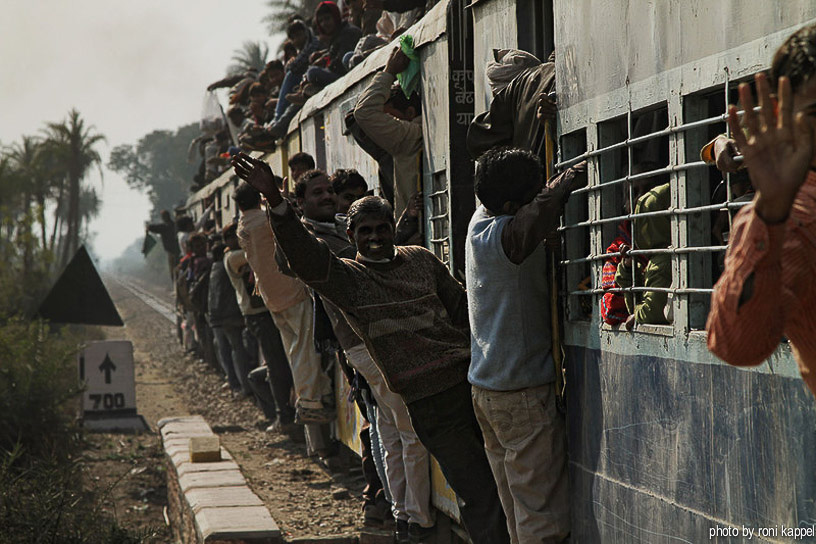
The trains are popular for several reasons. The fare is only Rs.29 ( $0.50c ,euro 0.35 ) from Gwalior to Sheopur Kalan while the buses charge Rs.110 or more. Some villages on the route are still not connected by a bus service and have no major roads in the immediate vicinity – Sumaoli is one example. And last but not the least; the rail route to Sheopur is far shorter than the road, which begins at Morena. We may romanticize narrow gauge as much as we want to but I’m sure the people on this line are just dying for gauge conversion to begin. However, that looks unlikely in the near term as Indian Railways has submitted an application for the line to be included in the ‘UNESCO World Heritage’ list.
All the NDM 5 locos are running short hood forward. There are reversing triangles at Sabalgarh and Sheopur and presumably a turntable at Gwalior. And all the locos have the side doors/panels to the engine open for faster cooling. Additionally, local kids often do the job of refilling the radiators from steel buckets at wayside stations.
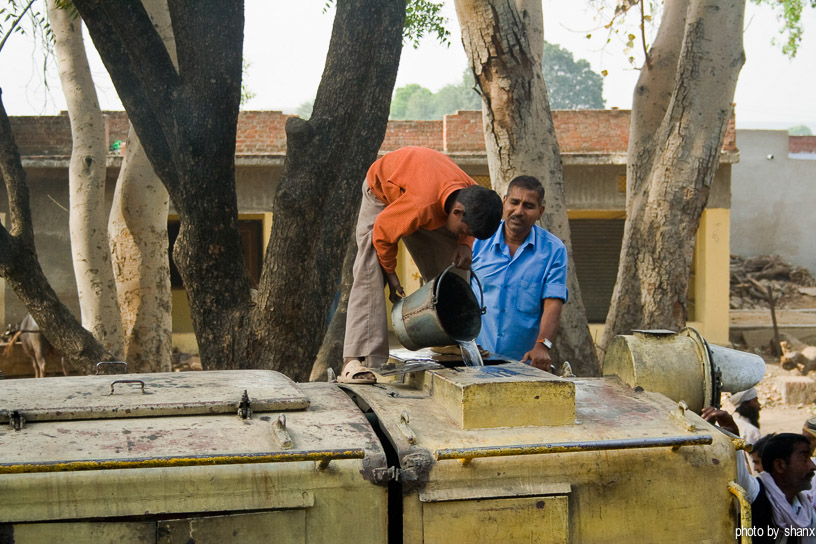
At Thara, a sign on the platform warns roof riders about a bridge in the section to come. One or two of our co-passengers advise us to dismount, no doubt worrying about the circumference of our girths. We don’t see anyone else getting off the roofs, so we stay put and await with some excitement the arrival of the through truss bridge on the Assan River. We cross without incident – it’s fun to lie flat on your back and watch the crossbeams glide by a few inches above your face!
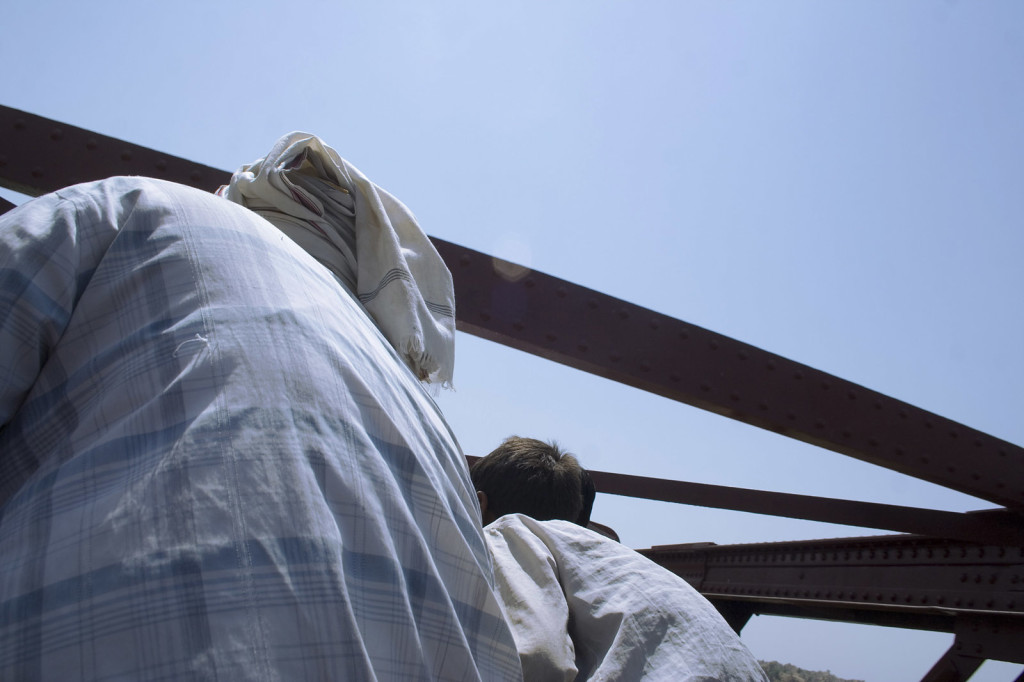
At Jora (or Jora-Allapur as the Railway calls it, to satisfy two adjacent villages) we meet the Morena-Sheopur road for the first time. It will stay with us till Silipur before heading south to Goras thence north west to Sheopur, while the railway cuts directly South west from Silipur to Sheopur.
After Kailaras, a biggish village or small town, road and rail converge to cross the Koari River on an old iron bridge. Road traffic is stopped by gates about 400 m before the bridge on both sides, so that vehicles caught in the middle are expected to keep off the bridge on their own upon sighting the approaching train. The chance of a collision is minimal because of the 5 kph speed restriction for the train. Today on the far side enough vehicles have been caught between the gate and the bridge to cause a particularly tangled jam on the approach road made even narrower by the track on one side. We trundle by with supreme unconcern – a bus in the thick of it only overtakes us after 5 kilometres!
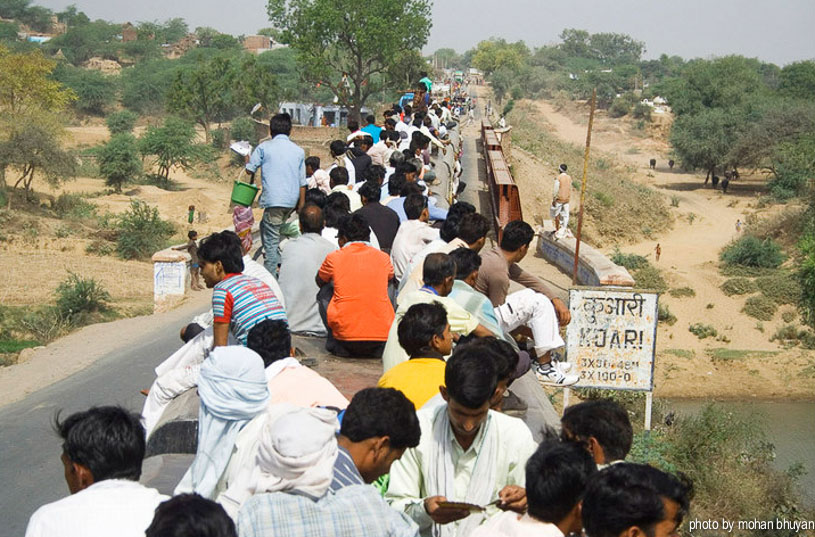
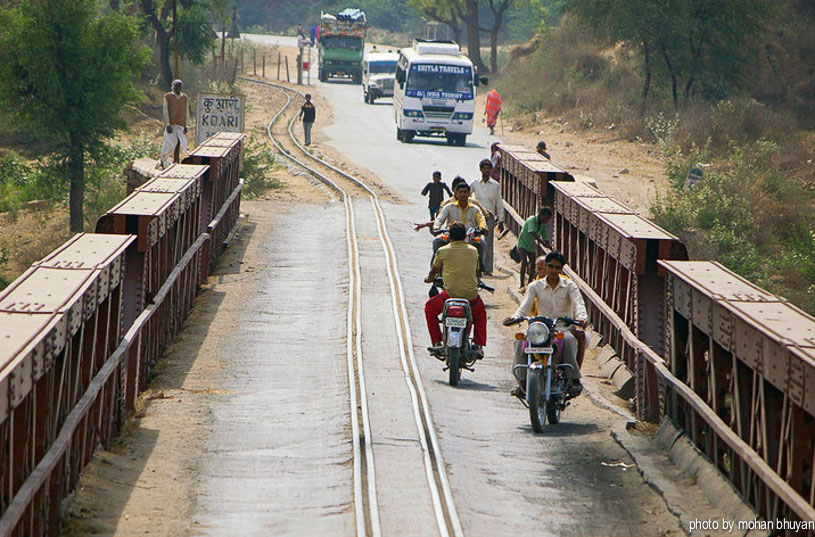
Pipalchowki gets its name from a grove of four Peepal trees ( ficus religiosa or fig tree ) within which there is a much revered temple. And so we reach Sabalgarh, the largest town on the route and fittingly the longest halt. Here the Drivers and Guard change and the crossing with our opposite number (272 Pass, heaving with humanity) takes place. Since it’s quite hot, we descend to see if there is room in Lower Class. No chance – there are as many people heading south to Sheopur as there were who got off here. The local Halwai just outside Sabalgarh station serves some of the most delectable Samosa’s ( batter fried wedges filled with spicy potatoes) to be found anywhere. Those and some quick aperitifs are our sustenance for the remainder of the journey.
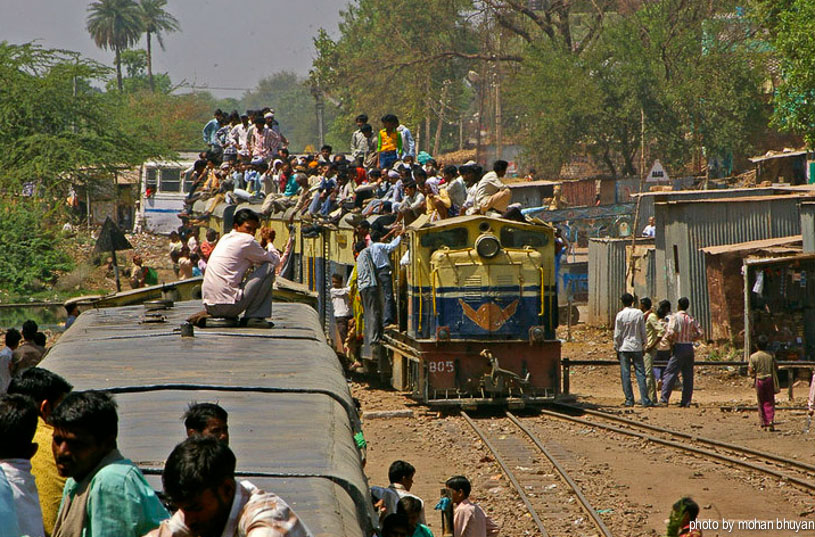
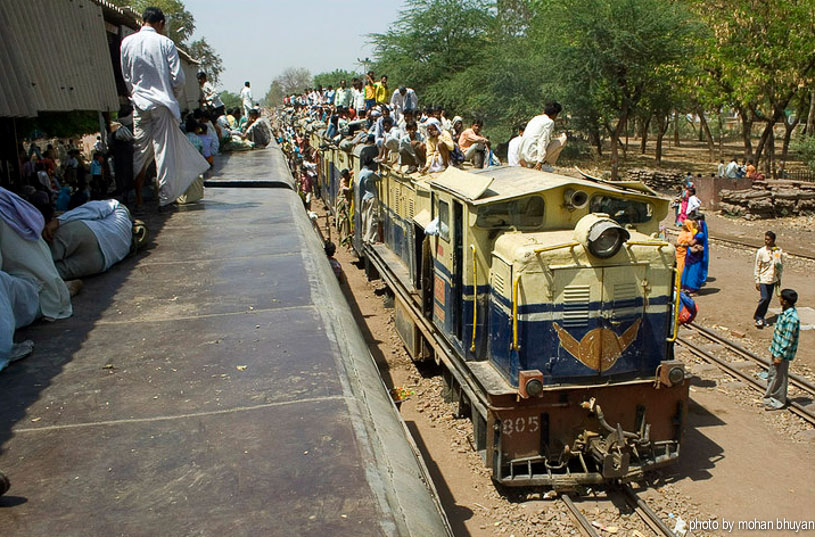
The landscape thus far has been a study in contrasts – fields replete with harvest ready wheat interspersed with large tracts of uncultivable broken ground with not a tree in sight except for a few stunted palms. To the west a line of low hills is visible occasionally in the direction of Ranthambhor, as also to the south – the uplands of the Shivpuri Plateau, the source of all the rivers we cross flowing northwards to the Chambal, whose course is parallel to the railway line (at times only about 5 km or so away.
The ripe Rabi wheat is truly a sight to behold and every time I see a yet to be harvested field the image of Sting singing Fields of Gold and of Russel Crowe running his hands through the grain as he walks in his fields in the movie Gladiator, come to mind. After a while this becomes annoying as I can’t seem to conjure up a similar image in a typically Indian setting. The closest I come to are the Punjabi mustard fields of Dilwale Duhlaniya le Jayenge ( a popular Indian movie )
Our co-passengers are mildly curious but friendly and eager to point out places of interest. Almost all the womenfolk cover their faces with the “pallu” ( border ) of their colourful sarees and it’s only in the larger towns like Sabalgarh that one can see unveiled women and some others in salwaar kameez. Later in Sheopur I spot two young women in jeans buying something from a hawker – I wonder if you can call that progress!
I was expecting some old and charming station architecture but it wasn’t to be. Most of the halt stations just have earthen platforms and a shed. Some are quite pretty like the tree lined Ambikeshwar and Kaimarakalan.
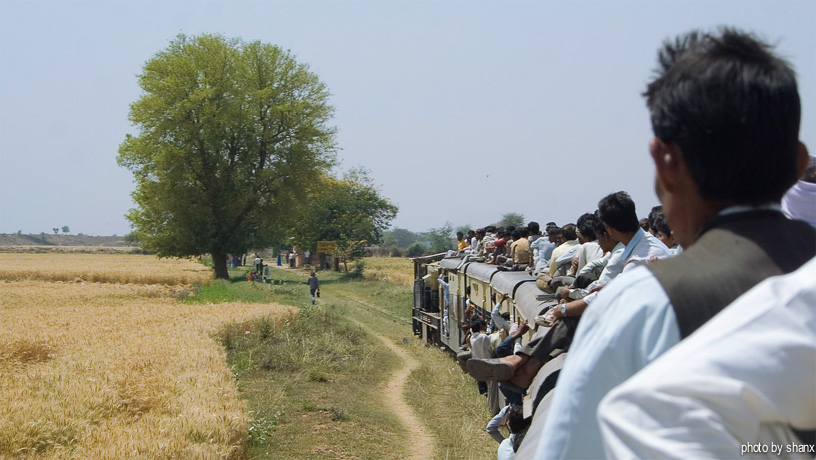
Bigger stations like Kailaras and Sabalgarh have one regular platform with the standard canopy. Signaling is limited to one semaphore on both sides of a crossing station. The track has steel sleepers and is well ballasted for the most part, except when it runs on the verge of a road.
The most scenic part of the line is after Sabalgarh. Beyond the wheat fields to the west of the line a huge undulating forest of thorny trees and scrub hovers slowly into view. This is one part of the National Chambal Wildlife Sanctuary according to the Eicher Road Atlas. The forest and track play hide and seek for a long time until a quite stunning coming together after Birpur: The railway curves through the fields towards another through truss bridge on the Kuno River, for which we once again lie flat on our backs.
Upstream of the railway bridge is another odd looking one carrying what looks like a huge concrete pipe across the river. It’s actually an aqueduct for a new, yet to be completed canal that will carry Chambal water to the arid Shivpuri plateau.
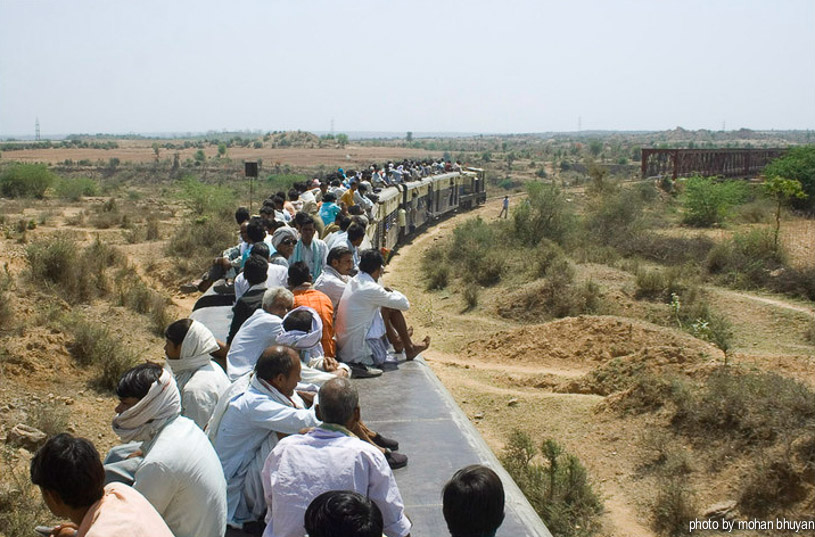
On the other side of the Kuno, the train enters a long cutting
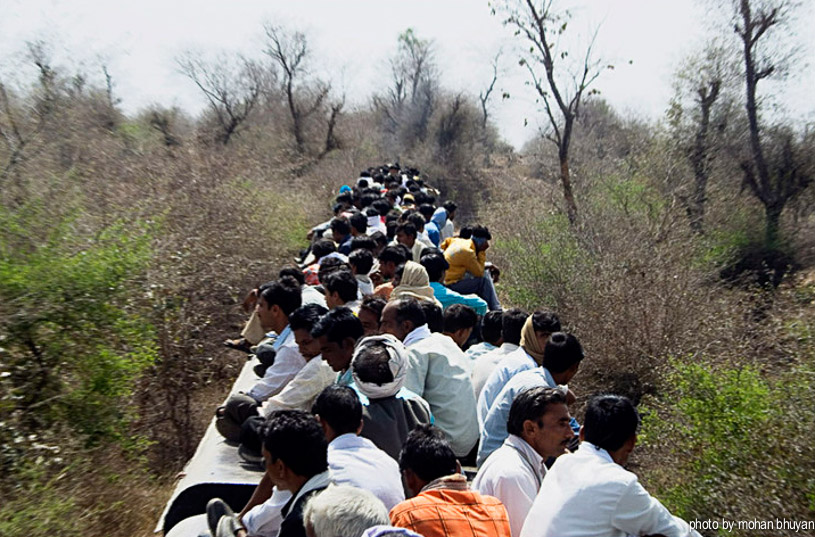
and when we emerge we find ourselves on a high ridge with a stunning vista below us…..

the Kuari valley and beyond it stretching to the horizon, the vast Chambal National Sanctuary. In the monsoon, this scene will be absolutely breathtaking.
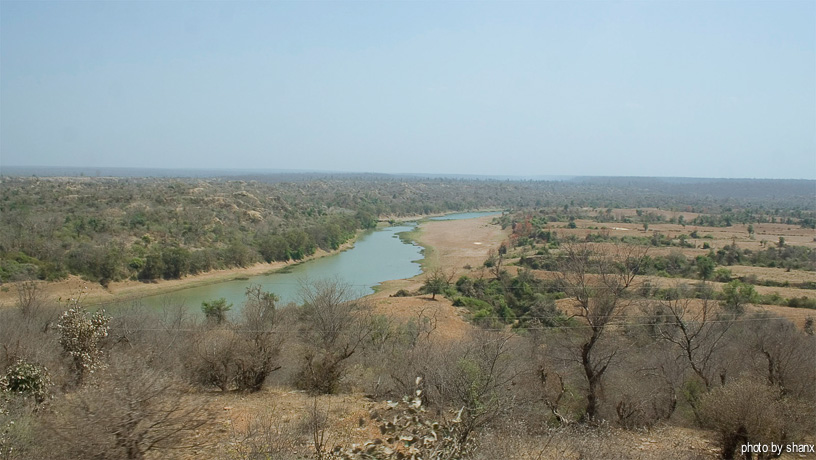
Some of the stations on the route now like Silipur and Ikdori have names that have no relation whatsoever to their location. Silipur should have been Shampur and Ikdori probably should have been called Raghunathpur. Ian Manning also wrote of a military farm “with a light tramway leading back into the bush”. We search in vain for this and even the locals don’t have a clue. The 1950’s era US Army topographical map of the area available on the Internet shows an abandoned NG line heading southwards from Seroni Road Station. Maybe this was Ian’s tramway – though no visible signs remain today.
Durgapuri is a way side halt for a renowned temple of these parts. The station is lined with stalls selling offerings and virtually the entire train makes a beeline to the temple for a quick “darshan”, so the stop is rather long. I get down to see if the temple is of any architectural interest (it isn’t) and bump into the Driver as he returns after genuflecting. He says the MPS on the line is 25-30 kph.
At Girdharpur we have the last crossing of the day with 278 Sheopur-Sabalgarh, again with a full complement of passengers in both the classes. The approach to Sheopur is through vast, open and mostly cultivated fields. The town’s microwave tower and cell phone masts announce it from a long way away. The station is unassuming though slightly larger than the others on the line and we have arrived bang on time at 4.25 pm – ten hours for 200 km. Actually it’s not bad at all for a 2ft line, I’ve been on MG lines that are far more laggardly.
We have an hour or so till the next bus to Sawai Madhopur so we go to see the fort, which is badly in need of intelligent preservation. The view from the western rampart is spectacular – over the Sip River and verdant fields.
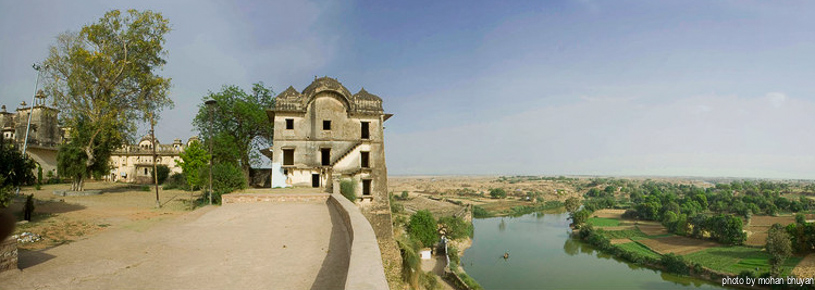
The Sawai Madhopur bus is getting a tyre replaced and it looks like it will take ages to reach there. Shanx hires a jeep for a grand but just as we are about to depart a police inspector stops us and commandeers the front seat without so much as a by your leave. Apparently he is on a mission to Patiala in Punjab to arrest somebody who disappeared after a bad property deal. Though we are annoyed at first, he turns out to be an interesting companion ably describing the socio-economic and political characteristics of the region to us. In return we tell him the names and timings of all the trains he can catch from Sawai Madhopur to Ambala or Rajpura.
The 60 km journey to Sawai Madhopur, is an uncomfortable one as the road is being widened so is in a state of disrepair for the most part. But it has some redeeming features – the bridge on the Chambal for one and the southern fringe of Ranthambhore National Park. Alas Sawai Madhopur does not have a trackside terrace hotel like Gwalior and the one we choose leaves a lot to be desired.
The Jan Shatabdi journey is uneventful except that a young mother sitting near us has a superb collection of Aerosmith on her cell phone. I spend more time looking at the speed and distance displays than out of the window, while Shanx and Moro spend more time at the door and in 2nd class than in our AC Chair Car.
So , that was an interesting account from Mohan from an interesting line
super post sir and pictures are also beautiful
The trains journey and the pictures which you have posted is mesmerizing and enthrals through the scenic beauty of Central India ,Also I have visited a similar narrow gauge route in West Bengal the Katwa Ahmadpur Narrow gauge railway which is now closed for gauge conversion.The story really refreshed my imagination
Thanks for your blog
When madhav rao sindia was railway minister serve had ween done to convert narrow gauge gwalior to sheopur rail line into broad gauge line there after so many times it repeated Mr Narendra singh tomer present cabinate minister protested for it but still position is as it is.I think it is approximate 150 km distance to change it into broad gauge Modi ji planing for hispeed trains can he take suitable action for it
Beautiful…………… Buddy I’m dying to travel by Narrow guage
Did an amazing job with photographs and detailed description. It gave me immense help in understanding about this narrow gauge train.
This was an excellent article and the best i have ever read.
Sundar
Brilliant & amazing piece! The photographs & the travelogue takes you on a marvelous journey. Hats off once again.
Upper Class! You guys travel well! Have been to Morena, Banmor and Gwalior many times (by rail to Gwalior / Morena, and by road to Banmor), and have been lucky to see the NG in action on a few visits. Vikas, the loco maintenance area, carriage workshop etc. at Gwalior brought back memories as I have spent many hours exploring that place waiting for Taj / Shatabdi. Many thanks to Mohan for recording this trip the way he has, and to you Vikas, for sharing it here.
I also have fond memories of traveling “Upper Class” between ’94 and ’98 with college mates on the day train from Lumding to Silchar in Assam. That is a meter gauge line, and the route is very scenic. At Badarpur, the YDM4 loco used to change ends to complete the last leg of the journey to Silchar. There were always one or two YGs in steam at Badarpur during those days performing shunting duties. Sadly, I have no photographs to share with you. Have any of you by any chance done something similar on that route?
Marvelous feature indeed. Many thanks to Mohan for writing that article (and a congratulations for the very deserving IRFCA best article honour); and a special thanks to you for re-publishing this here. I cherished every photograph and kept wondering if I could ever represent this in a model… I guess not – as it seems nearly impossible to me to capture so much life in a model railroad!
What a great piece! Not to often we get to see a first hand view of such an interesting piece of India. I have shared this on our Fast Tracks Facebook page, I’m sure others will love to read it too.
Cheers!
Tim
Brilliant! Outstanding! Magnificent! Undoubtedly, your best feature yet. And on a subject truly worth its weight in gold. Thanks